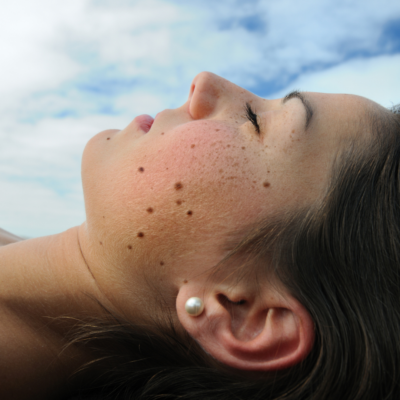Know Your Enemy: Skin Cancer
Year after year, skin cancer remains the most common form of cancer identified in both men and women. An estimated 1 in 5 Americans will be diagnosed with some form of skin cancer in their lifetime. Your best strategy against skin cancer is to educate yourself about preventing, detecting and treating both melanoma and non-melanoma skin cancers.
Types of skin cancer
Basal cell carcinoma
The most common form of skin cancer, it’s often easily treated with simple outpatient surgery to remove the cancerous skin cells. This form of cancer rarely spreads to other parts of the body, but can cause cosmetic and vision issues if left untreated too long.
Squamous cell carcinoma
Also common, this form of skin cancer can be treated easily if found soon on. Neglected, however, it can spread to other parts of the body by way of nerves and blood vessels.
Melanoma
Fortunately, melanoma is the least common type of skin cancer because it is also the deadliest. It often develops in a mole or can appear as a new spot on the skin. Early detection is key to survival, as this cancer can spread to organs beyond the skin.
How to prevent it
Seek shade.
Try to avoid peak UV sun exposure between the hours of 10am and 2pm. Remember this easy rule of thumb: if your shadow is shorter than you are, seek shade.
Never forget sunscreen.
Anytime you step out the door, first slather on a generous layer of sunscreen with SPF 30 or higher. Make sure it offers “broad-spectrum protection” to shield you from both UVA and UVB rays. For more lasting protection, use a water-resistant or sport sunscreen. However, you’ll still need to reapply every two hours, and definitely after swimming or sweating. And don’t be stingy! If you’re like most adults, to do the job right you’ll need to apply about an ounce, or enough to fill a shot glass.
Stay away from tanning beds.
It may seem perfectly harmless to do visit the day spa for a hit of lovely golden color, but don’t do it! Tanning beds inflict the same kind of damage to your skin as the sun, causing skin cancer and premature skin aging. Either embrace the pale or try a self tanner instead.
Perform regular skin self-exams.
This is the best way to detect skin cancer early, when it’s most treatable. Watch your skin closely, and see a dermatologist if you notice anything suspicious.
How to spot it
Skin cancer is often very easily treated if found early, so stay on the lookout for possible signs. Make an appointment to see a dermatologist if you find:
√ Any new or suspicious spots on your skin, or
√ Any spot that changes, itches or bleeds.
In addition to self-exams, see your dermatologist every 6-12 months if you have fair skin, a history of skin cancer, a family history of skin cancer, or multiple moles.
How to treat it
When caught early, skin cancer can normally be treated with a quick visit to your dermatologist’s office. Depending on the size, location and type of cancer, you and your doctor can decide on a treatment plan.
Common treatment options include:
Curettage
This scraping procedure can remove superficial, low-risk skin cancers often located on the back, arms or legs.
Standard excision
After local numbing (anesthesia) of the area, the skin cancer is surgically removed and a few stitches may be placed to minimize scarring.
Mohs micrographic surgery
The Mohs method is a complex procedure used for high-risk skin cancers, such as those on the head, neck and hands, or for larger tumors. Mohs surgeons have undergone specialized training in removing more difficult skin cancers. They are also trained in cosmetic surgery repairs to minimize scarring.
Make your appointment with a board-certified dermatologist at California Skin Institute (California Skin Institute) as an important part of both your defensive and offensive strategy against skin cancer. California Skin Institute has board-certified physicians, including Mohs-trained specialists, to help you detect and remove skin cancer — whether a new basal cell carcinoma or an advanced melanoma.






 / 291 Reviews
/ 291 Reviews